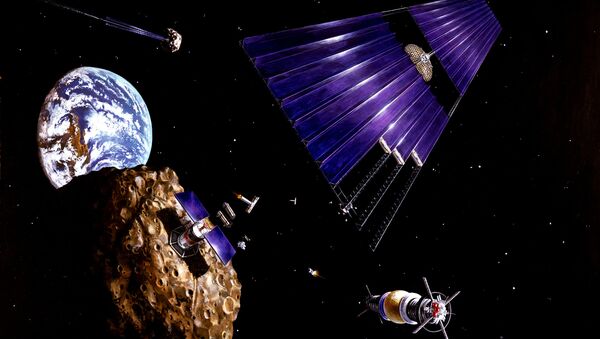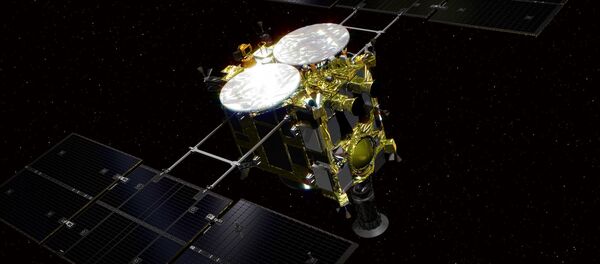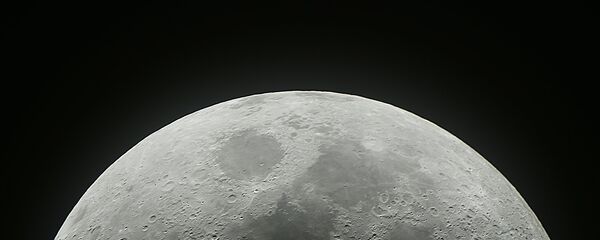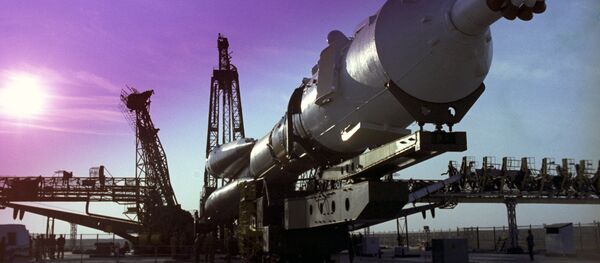The Colorado School of Mines, which offers one of the coolest sounding university degree tracks ever — the Space Resources Program — hosted a Space Resources Roundtable in June, and several USGS officials were present.
"The space-resources community will benefit greatly from working together with the USGS to assess the location and value of minerals, energy and water on the moon, Mars and asteroids," Angel Abbud-Madrid, director of the Center for Space Resources at the Colorado School of Mines, told the audience at the conference.
He noted that the USGS' proven expertise in terrestrial geological mapping, including locating resource deposits, is readily applicable to extraterrestrial operations as well, Space.com reported.
"The USGS has been paying steadily increasing attention to the issue of space resources for the last several years," USGS research geologist Laszlo Kestay told Space.com for an article published Tuesday. USGS is already involved in space programs, he noted, having partnered with NASA on the Landsat Earth observation satellite program, effectively making USGS a US space agency already.
"At this point, we have done enough work to feel confident that the methods the USGS uses to assess mineral, energy and water resources on Earth can be used to assess space resources with minimal modification," Kestay said. "We have also done enough preliminary work to identify some areas where humanity's lack of knowledge will result in exceedingly large uncertainties in assessments undertaken today."
The next logical step, then, from using satellites to map Earth's geology is using them to map other stellar objects' geologies. That's going to become increasingly possible as several space agencies continue to gear up for the next generation of deep space travel, both manned and unmanned.
Kestay told Space.com that he anticipates Congressional funding for full scale assessments of space resources, "and we are taking a number of steps to be prepared for that possibility."
Huge Prospects
But this isn't seen as a "Star Trek"-esque glorious future of united humanity collectively exploiting the resources of the stars: it's going to be a capitalist free-for-all, pursued out of national interest and seeking to deny space resources to rival Earth-bound powers.
"The majority of rare earth minerals generated today, terrestrially, are from China, which is a real risk to our industries in the United States," Bob Lindberg, vice president for flight systems at Moon Express, said at the 2016 Space Commerce Conference and Exposition in Houston, Texas.
The administration of US President Donald Trump has made it increasingly clear that the creation of the new sixth branch of the US military — the Space Force — was motivated in no small part by fears of China's future dominance of space, Sputnik has reported.
In Frank Herbert's science fiction classic "Dune," he who controls the spice — a resource essential for human space travel — controls the universe. The real universe may not be too different, with space mining possibly serving as both a source of outstanding wealth for prospectors looking to sell back on Earth, but also as a valuable off-world source of vital resources that would otherwise have to be transported from the surface of Earth into orbit — a costly venture, to say the least.
How costly? Daniel Faber, CEO of space exploration firm Deep Space Industries, told Space.com that launching a full, 16-ounce water bottle into space presently costs about $2,500, while putting the 660,000 gallons of water in an olympic-size swimming pool will set you back a cool $1 billion.
Water is needed for human life, of course, but is also used for cooling computer systems, and as a group of scientists proved in a study published in Nature in July, can be processed and recycled to make fuel and breathable air as well, Sputnik reported at the time.
Planetary Resources, an asteroid mining company, estimates that the roughly 16,000 near-Earth asteroids collectively hold 2 trillion metric tons of water. For comparison, 1 metric ton of water (on Earth, of course) is roughly 250 gallons.
However, many of those near-Earth asteroids may also be rich in metals from the platinum group — ruthenium, rhodium, palladium, osmium, iridium and platinum — which have similar physical and chemical properties and tend to be found together in the same mineral deposits. A 2017 report published by Goldman Sachs estimated that a football-sized asteroid could contain $25 to $50 billion worth of platinum, CNBC reported.
While both Mars and Earth's moon have been found to have subterranean liquid water by NASA scientists, estimates of mineral content on asteroids come almost purely from spectrographic measurements of asteroids taken as the sun's light gleamed off their surface for a split second, Gizmodo noted, making precision commentary difficult.
Only one sample has ever been taken from an asteroid successfully: in 2005, the Japanese Hayabusa spacecraft landed on the small asteroid Itokawa and returned a small dust sample to Earth. The European Space Agency's Rosetta spacecraft, which landed on the comet nucleus Churyumov-Gerasimenko in 2014, carried a sampling drill for soil measurements, but problems in the landing rendered it unable to use the drill, and no sample was taken.
But commercial space mining and exploration won't just drive the extractive industries themselves: they'll drive a whole host of other industries as well. Speakers at the Space Commerce Conference and Exposition representing a number of space industrial firms addressed the question of the "supply chain" for far-off mining operations.
At the forum, speakers laid out the similarities between space mining and types of extractive industries already operating on Earth in hard-to-reach places, such as offshore oil and gas drilling. Boucher noted that the supply chain for present mining operations has four major categories: exploration for the material; development of necessary infrastructure to support the mining operation; the actual mining operation itself; and then closure, or returning the site to nature. He noted that most terrestrial mining companies don't do all of those activities themselves, instead hiring experts to provide them with those services. In space, it may work just the same way.
"During the gold rush, if you're going to be in the supply chain, you don't want to be doing the actual mining," Dale Boucher, CEO of Canadian mining firm Deltion Innovations Ltd, said at the conference, Space.com reported at the time. "What you want to be doing is selling the 50 pounds of flour and 10 pounds of baking grease to the guys who are going up there and struggling and looking for gold."






